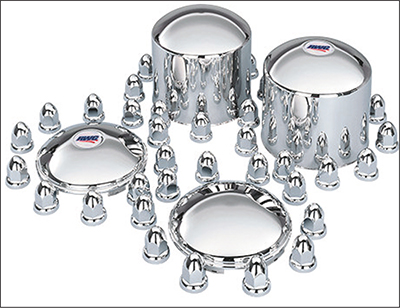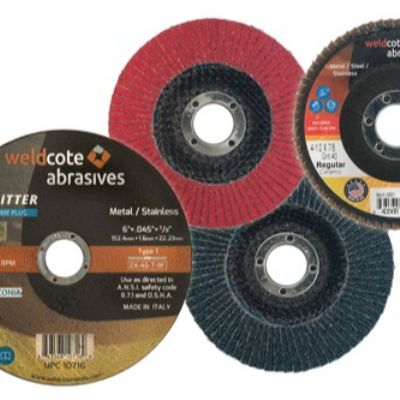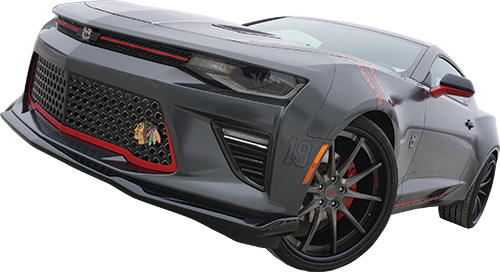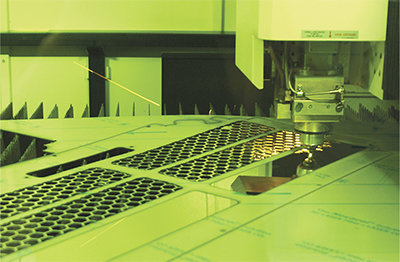Fiber Takes Over for Older CO2 Laser Technology
To do the work, RealWheels had been using a Mazak CO2 laser-cutting machine, but by 2015 management decided it needed a faster and more efficient solution. At first the company considered a new CO2 machine, but fiber-laser technology soon caught its eye. 
RealWheels uses its new laser cutter for 85 percent of its products, including Freightliner grilles (left) and Kenworth billet pedals (right
Decision makers at RealWheels found that fiber-laser machines offered a wider range of cutting capabilities and higher cutting speeds than their CO2 counterparts, while using less consumables. In narrowing the focus to fiber laser machines, the company had strict requirements for selecting a system. For instance, RealWheels was interested in having automated features to quicken setup.
“We were looking for automatic nozzle changing and automatic focus to give a quick transition when switching materials,” Cory Polka explains.
And, though 3 kW was the only power option on some systems, RealWheels preferred 4 kW to enable processing of thicker materials for its IDEA division. An advanced cutting head would also be needed to process various material gauges. Another requirement was a ball transfer.
“We work with a lot of stainless steel and without a ball transfer the material can easily become damaged,” says Jan Polk. “Our customers will notice even the slightest scratches.”
Checking off its list of requirements, RealWheels selected the Optiplex Nexus 3015 fiber laser-cutting machine from Mazak Optonics Corp., Elgin, IL. The machine, installed this past March, offers a side door for simple internal access, pallet changer to increase throughput, ball transfer to keep stainless steel scratch-free and Mazak’s multi-function torch.
Key to the entire package are the machine’s Intelligent setup and monitoring functions. Automatic setup functions include nozzle changing, focus position, focus detection, profiler calibration and nozzle cleaning. Monitoring functions include pierce, plasma and burn detection. Together, these capabilities dramatically simplify operation and automatically adjust cutting parameters to increase the quality of parts and overall throughput, according to Mazak officials. 
In the early-1980s, RealWheels started out making custom wheel covers. Wheel work, including this stainless-steel wheel-trim kit with lug-nut covers, is still a mainstay of the business.
Efficiency Soars, Spurring More Business
“The new-machine buzz got our customers very excited, so excited that they started sending in drawings before the machine was installed,” says Jan Polka, noting that since the machine was placed online, orders have increased, due in part to more efficient operations that allow RealWheels to provide more competitive pricing to its customers.
“The machine is a workhorse,” says Cory Polka. “It processes 85 percent of our products. We have a job that was taking 2.5 to 3 hr. to complete on the CO2 laser. We now cut the exact same grille cover on the new machine in only 25 min.”
Another job, a wheel cover, had taken 11.5 min. to complete on the CO2 machine; it now takes only 1.5 min. on the new machine. A portion of these production-time reductions results from elimination of finishing steps. Operators can deliver laser-cut pieces directly to forming or welding operations.
The new fiber laser-cutting machine “has given us the confidence that there is no job we can’t compete for,” says Jan Polka. “We know that our equipment can do the work and provide high-quality results.” MF
Article provided by Mazak Optonics Corp., Elgin, IL; tel. 847/252-4500, www.mazakoptonics.com.
View Glossary of Metalforming Terms
See also: Mazak Optonics Corporation
Technologies: Cutting, Fabrication
Comments
Must be logged in to post a comment. Sign in or Create an Account
There are no comments posted. Fabrication
FabricationNew Abrasives Line Includes Flap Discs, Quick-Change Discs
Tuesday, May 7, 2019
 Fabrication
FabricationNew Rapid-Delivery Program for Lifting and Positioning Equip...
Tuesday, May 7, 2019
 Fabrication
FabricationRobot Tools for Drilling, Finishing and More
Tuesday, May 7, 2019







